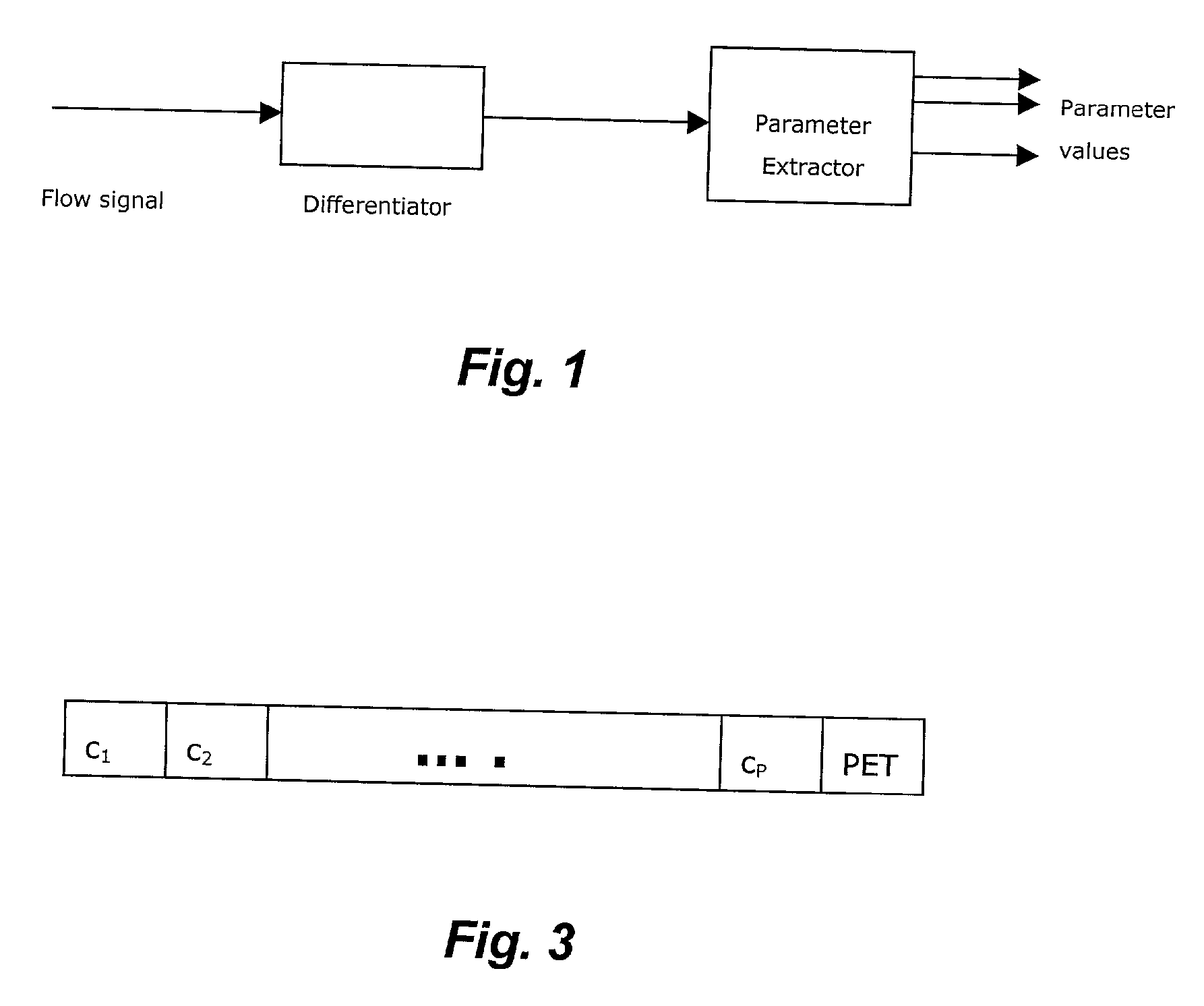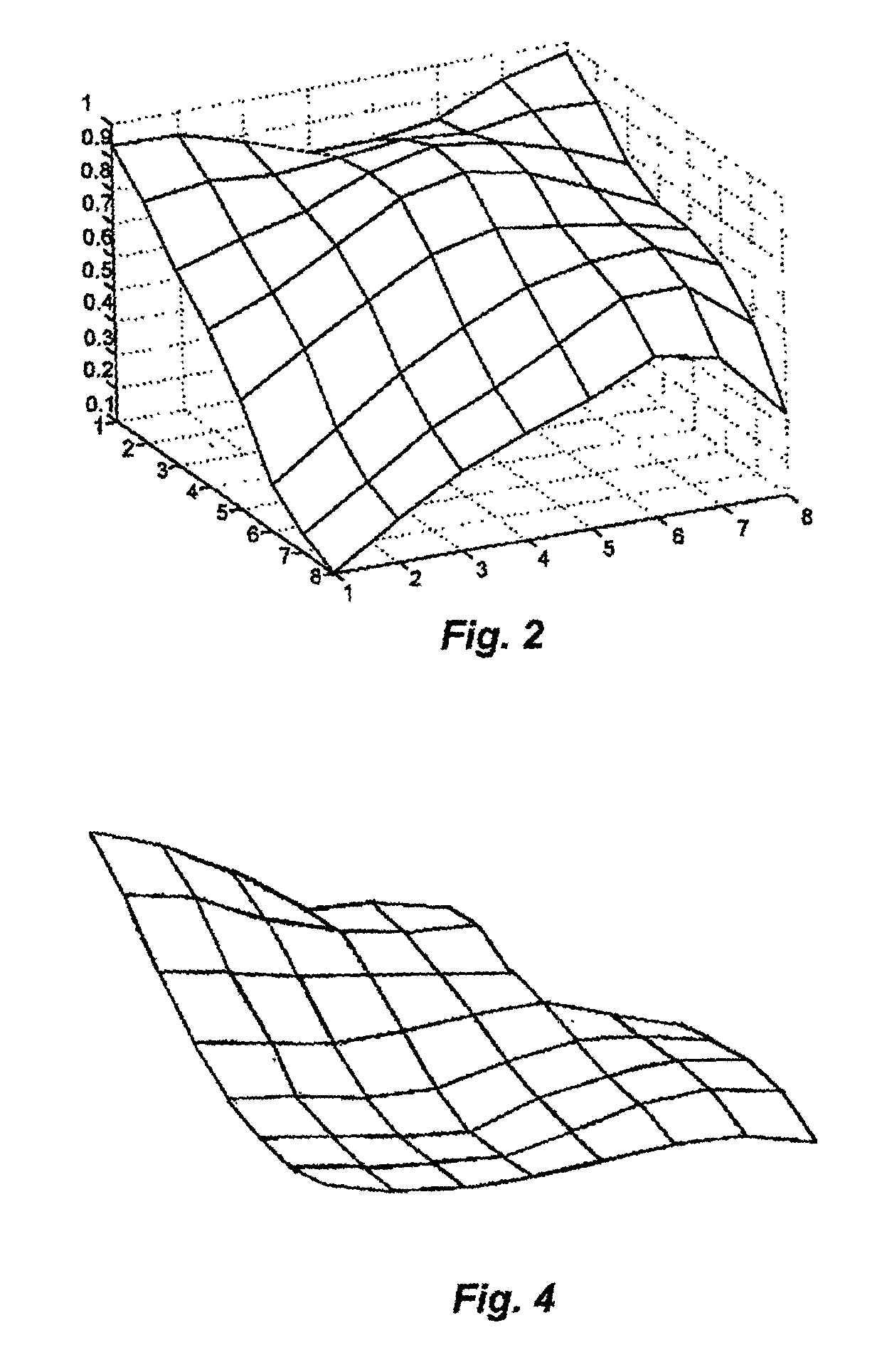Auto CPAP
a technology of cpap and auto-cpap, which is applied in the field of auto-cpap, can solve the problems of increasing the risk of progressive deterioration of the airway aperture, and more severe respiratory disturbance before the patien
- Summary
- Abstract
- Description
- Claims
- Application Information
AI Technical Summary
Benefits of technology
Problems solved by technology
Method used
Image
Examples
example 2
[0055] Data Acquisition.
[0056] Let the flow signal be a digitized version of the analog flow-signal sampled at .function..sub.s samples / second, giving a sequence of samples
x.sub.i, i=0,1, . . . ,
[0057] where x.sub.i is short for x(i.multidot.T) i.e. the sample at time instant i.multidot.T and
[0058] Preprocessing.
[0059] To reduce the influence of individual patient variations and to facilitate classification stability, the signal should pass a device to remove the signal mean. Any kind of steep edge high pass filter can be employed, thus the ideal differentiator is used for simplicity. The output from the differentiator, d, (and the input to the parameter extractor) will then be
d.sub.i=x.sub.i-x.sub.i-1
[0060] where i=0,1, . . . , and x.sub.-1.ident.0
[0061] Parameters.
[0062] The cepstrum coefficients have shown to well model the frequency content of the signal using only a few parameters (low order model). In addition, the dynamics of the cepstrum coefficients facilitate quan...
example 3
Hard Decision A
[0088] Let 64 map nodes be arranged in an 8.times.8 square grid and numbered 0 to 63 from the top left to the low right corner. Thus for example the map distance D.sub.0,1=1, D.sub.0,2=4 and D.sub.0,9=2 .
[0089] A large database is recorded containing flow-measures from several patients during all phases of sleep. The recordings are performed at 20 Hz and stored on a memory disk. The database will contain normal sleep breathing, flow limitations, snoring, yawning, coughing, various apneic events, but also mask leakage and other artifacts.
[0090] The database is analyzed sample for sample. The 20 Hz flow-signal is first passed through an ideal differentiator. A rectangular window of 180 samples is used to form basis for extracting 4 cepstrum coefficients (c.sub.1, . . . , c.sub.4) and the PET parameter. Thus the Feature Vector is a 5-dimensional vector with values extracted every 50 ms.
[0091] Samples are collected from the database in a random manner as long as the train...
example 4
Hard Decision B
[0099] This example is similar to the one described in example 1, but here a Hamming window of 180 samples is used instead of the rectangular. Furthermore the cepstrum coefficients are weighted to have approximately the same variances, whereas the PET parameter is given twice the variance of the cepstrum. This will give the PET parameter a little more importance than the rest of the parameters. The following weight function is employed:
w=[1 1.41 1.5 4 2]
[0100] The training is carried out exactly ass before, and the map response for a typical flow-limitation signal is shown in FIG. 4. In this case, nodes X,Y,Z will probably be labeled as a flow limitation region.
PUM
 Login to View More
Login to View More Abstract
Description
Claims
Application Information
 Login to View More
Login to View More - R&D
- Intellectual Property
- Life Sciences
- Materials
- Tech Scout
- Unparalleled Data Quality
- Higher Quality Content
- 60% Fewer Hallucinations
Browse by: Latest US Patents, China's latest patents, Technical Efficacy Thesaurus, Application Domain, Technology Topic, Popular Technical Reports.
© 2025 PatSnap. All rights reserved.Legal|Privacy policy|Modern Slavery Act Transparency Statement|Sitemap|About US| Contact US: help@patsnap.com



